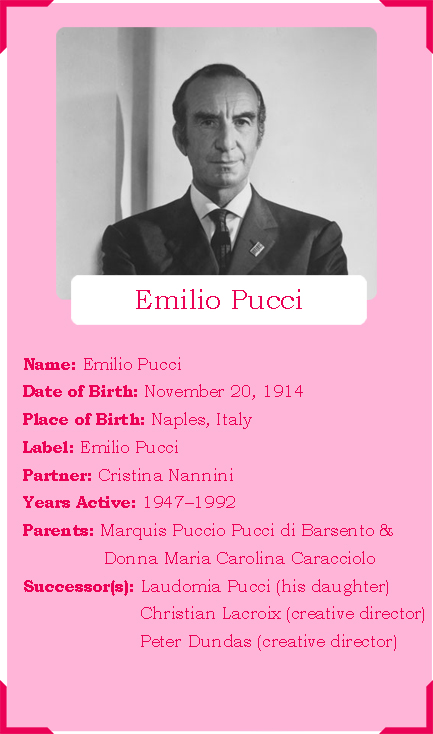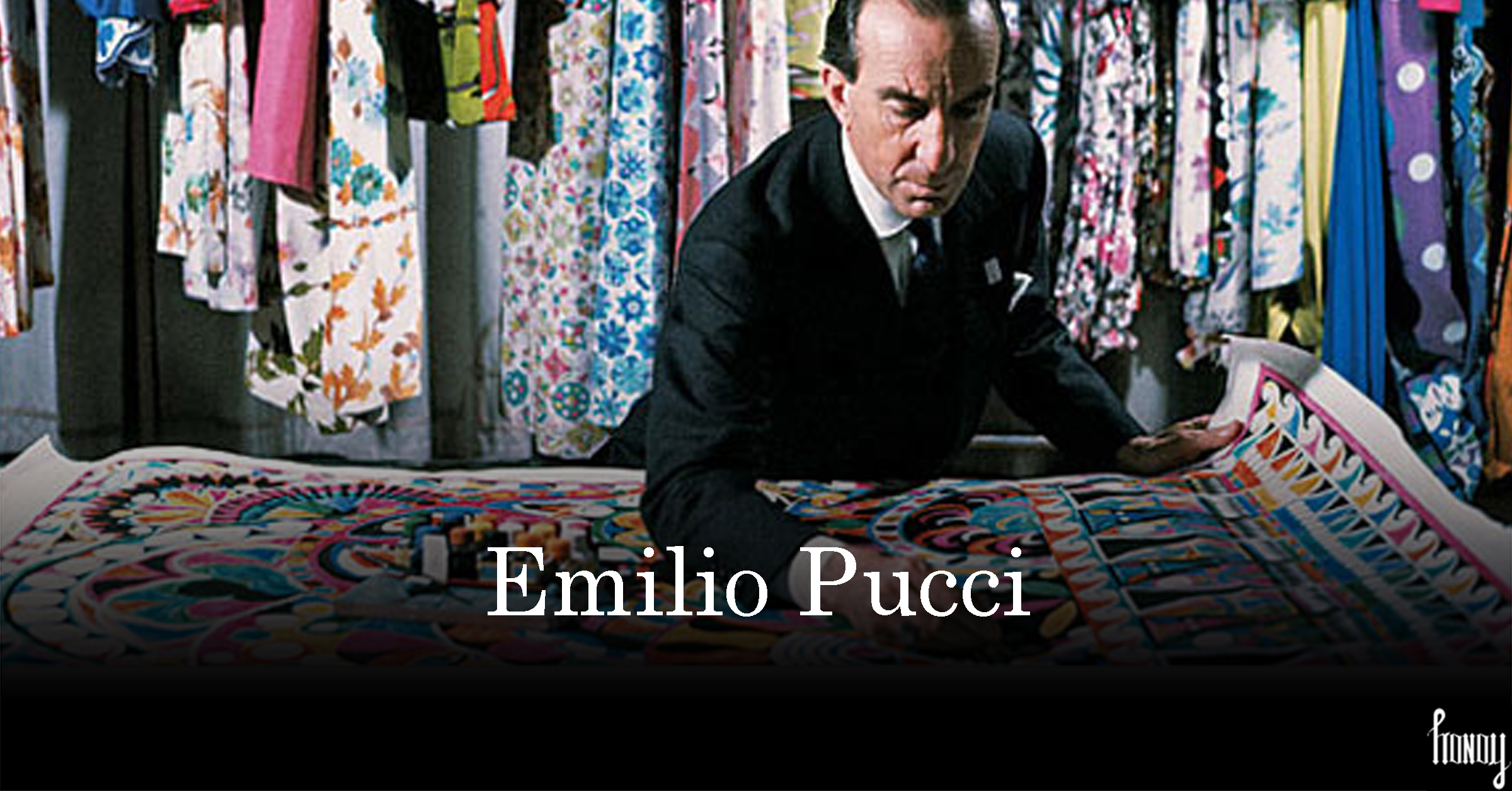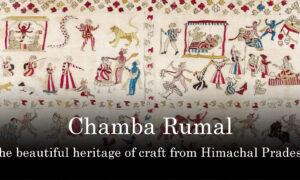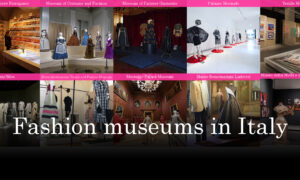Introduction to Emilio Pucci

Emilio Pucci, an aristocratic Italian designer, revolutionized the world of fashion with his vibrant prints, innovative use of color, and luxurious yet comfortable clothing. Often referred to as the “Prince of Prints,” Pucci’s designs are synonymous with freedom, boldness, and a zest for life. His influence on the fashion industry is profound, stretching from the runways of Milan to the wardrobes of Hollywood’s elite. This blog will look closely at the life and worl of Emilio Pucci. As Pucci once said,
“Gaiety is one of the most important elements I brought to fashion. I brought it through color.”
Early Life and Background
Born on November 20, 1914, into one of Italy’s oldest and most illustrious noble families, Emilio Pucci di Barsento grew up surrounded by the beauty and history of Naples. His early years were shaped by a blend of aristocratic privilege and a love for the arts, which would later find expression in his designs. Pucci’s passion for color and pattern can be traced back to his childhood, where he was inspired by the vibrant landscapes of his homeland and the intricate details of Renaissance art.
Pucci’s education was equally eclectic. He studied at Milan’s prestigious Istituto Politecnico and later earned a Master’s degree in social science from Reed College in Oregon, USA. His exposure to different cultures, combined with his love for skiing, sparked an interest in creating functional yet stylish sportswear, laying the groundwork for his future in fashion.
Career Beginnings

Emilio Pucci’s journey into fashion began somewhat serendipitously. In 1947, while skiing in Switzerland, Pucci designed a streamlined ski outfit for a friend. This outfit caught the eye of Toni Frissell, a photographer for Harper’s Bazaar, who featured it in the magazine. The exposure garnered Pucci immediate attention, leading to offers from American retailers to create sportswear collections.
By 1949, Pucci opened his first boutique on the Isle of Capri, a glamorous holiday destination frequented by the wealthy and famous. His initial collections were characterized by their casual elegance, featuring silk scarves and lightweight blouses with vibrant prints inspired by the Mediterranean. Emilio Pucci’s use of bold colors and patterns set him apart from the more conservative fashion trends of the time, and his designs quickly gained a devoted following.
Rise to Fame
The 1950s marked a significant turning point in Pucci’s career. His designs captured the essence of the jet-set lifestyle, appealing to socialites, royals, and celebrities alike. His 1951 collection, presented at the first-ever fashion show in Florence, was met with critical acclaim, establishing him as a leading designer in the Italian fashion scene.
Pucci’s designs became synonymous with luxurious, easy-to-wear clothing that exuded elegance and style. His client list boasted names like Marilyn Monroe, Sophia Loren, and Jacqueline Kennedy. His creations were not just confined to the fashion elite; Pucci collaborated with American department stores such as Saks Fifth Avenue, making his designs accessible to a broader audience.
In 1954, Pucci received the prestigious Neiman Marcus Award, often referred to as the “Oscar of Fashion,” solidifying his status as a global fashion icon. His swimwear collection, launched in the 1960s, was a groundbreaking success, featuring psychedelic prints that became a hallmark of the era.
Signature Style and Innovations
Emilio Pucci’s signature style is characterized by his use of bold, swirling prints, geometric patterns, and an unrestrained use of color. His designs often featured bright pinks, blues, oranges, and greens, creating a visual vibrancy that was both modern and timeless. Pucci’s prints were not just patterns; they were works of art, meticulously designed to evoke emotion and movement.
A key innovation in Pucci’s work was his use of lightweight fabrics such as silk jersey, which draped beautifully and offered comfort without sacrificing style. His clothing was designed to be both luxurious and practical, embodying the carefree spirit of the 1960s. Pucci’s designs were groundbreaking in their fusion of elegance and functionality, making them ideal for the modern woman.
Iconic pieces from Pucci’s collections include his printed shift dresses, silk scarves, and palazzo pants. His designs became a staple of the jet-set lifestyle, capturing the essence of travel, leisure, and sophistication. Pucci’s ability to blend comfort with high fashion set a precedent that continues to influence designers today.
Impact on the Fashion Industry
Emilio Pucci’s influence on fashion extends beyond his prints and patterns. He was a pioneer in branding, using his signature prints and colors to create a distinct visual identity for his brand. His use of the “Emilio” signature on his designs was one of the first instances of designer branding, a practice that has become commonplace in the industry.
Pucci’s designs also had a significant impact on fashion shows and events. His innovative presentations, often set against the backdrop of his opulent Florentine palazzo, were as much about the atmosphere and experience as the clothes themselves. Pucci’s shows were a celebration of life and beauty, reflecting his belief that fashion should be joyous and uplifting.
In the broader cultural context, Pucci’s designs symbolized the liberation and optimism of the post-war era. His colorful, fluid garments represented a break from the restrictive fashion of the past, offering women a new sense of freedom and self-expression. Pucci’s influence can be seen in the work of designers like Missoni and Etro, who continue to draw inspiration from his use of color and print.
Notable Collaborations and Projects
Throughout his career, Emilio Pucci engaged in several high-profile collaborations that expanded his influence beyond the fashion industry. In the 1960s, he designed the uniforms for Braniff International Airways, bringing his signature style to the skies. These uniforms, with their vibrant colors and sleek silhouettes, became iconic, symbolizing the glamour of air travel during the golden age of aviation.
Pucci also ventured into interior design, creating fabrics and furnishings that brought his bold aesthetic into homes. His collaboration with the Italian automobile manufacturer Maserati led to the creation of a special edition of the Maserati Quattroporte, featuring Pucci-designed interiors.
Personal Life and Public Persona
Emilio Pucci’s personal life was as colorful as his designs. Known for his charm and sophistication, Pucci was a fixture in European high society. His aristocratic background and passion for fashion made him a captivating figure in the media. Despite his success, Pucci remained down-to-earth, often describing himself as a “peasant” with a simple love for life and beauty.
Pucci’s marriage to Cristina Nannini in 1959 was a significant event in his life, and the couple had two children, Alessandro and Laudomia. Laudomia Pucci would later take over the creative direction of the brand, ensuring that her father’s legacy continued to thrive.
Legacy and Continuing Influence
Emilio Pucci passed away in 1992, but his legacy lives on through his eponymous brand, which continues to be a symbol of Italian luxury and style. The brand’s acquisition by LVMH in 2000 brought new life to Pucci’s vision, with creative directors like Christian Lacroix and Peter Dundas bringing their unique perspectives to the iconic label.
Pucci’s influence on fashion is enduring, with his prints and patterns remaining as relevant today as they were decades ago. His ability to blend art, fashion, and lifestyle set a standard for the industry, inspiring future generations of designers to think beyond the runway. Pucci’s work continues to be celebrated in exhibitions, retrospectives, and collaborations, a testament to his lasting impact on the world of fashion.
Conclusion
Emilio Pucci’s contribution to fashion is immeasurable. His visionary approach to color, print, and design not only defined an era but also reshaped the way we view fashion. Pucci’s legacy is one of joy, freedom, and elegance, a reminder that fashion is not just about clothing, but about expressing the beauty of life. As we look to the future, Pucci’s influence will continue to inspire and shape the world of fashion, a true testament to his genius and creativity.
Whether you’re a long-time admirer or new to his work, exploring Emilio Pucci’s collections is a journey into the heart of fashion itself. His designs are more than just garments; they are a celebration of art, culture, and the timeless allure of Italian style. Do let me know your point of view about the life and work of Emilio Pucci.





























The mexican
April 17, 2025 at 1:02 pm
Awesome blog! Is your theme custom made or did you download it from somewhere? A design like yours with a few simple tweeks would really make my blog stand out. Please let me know where you got your design. Thank you